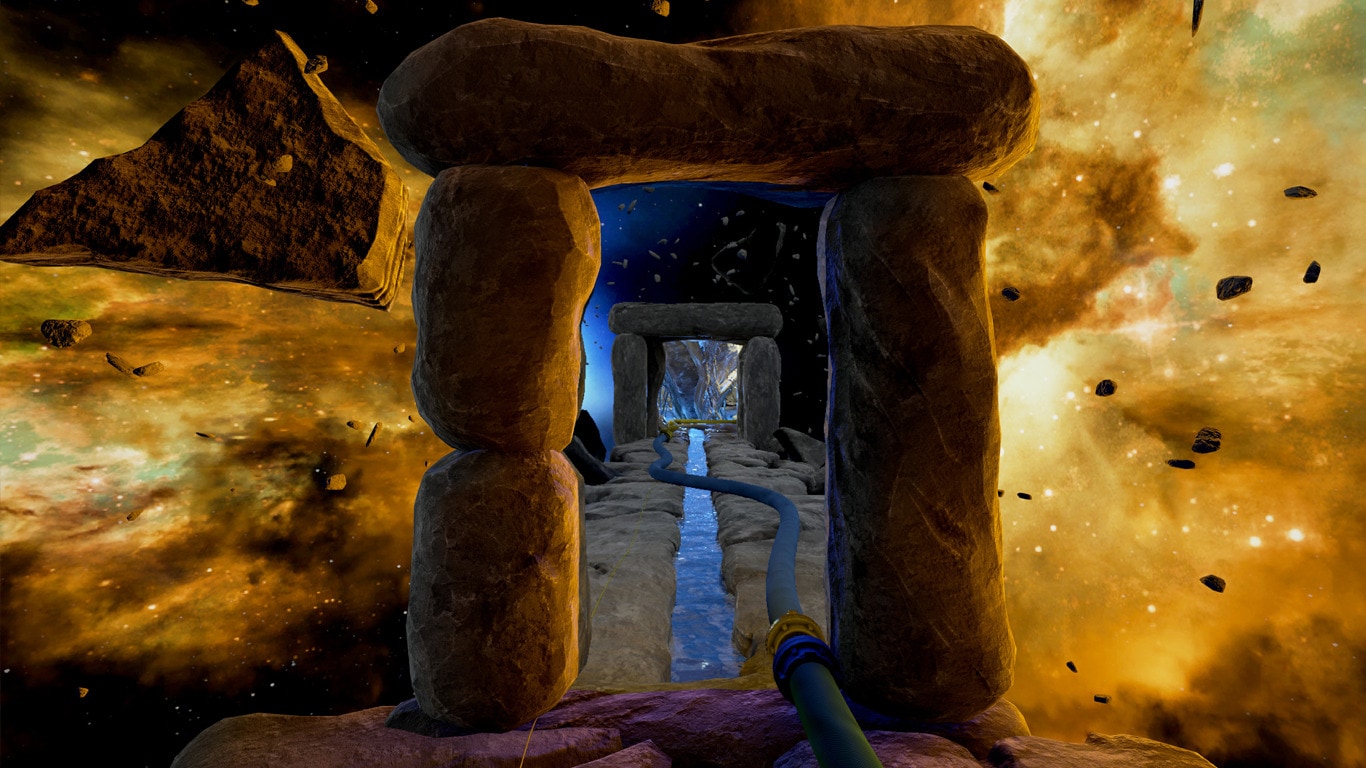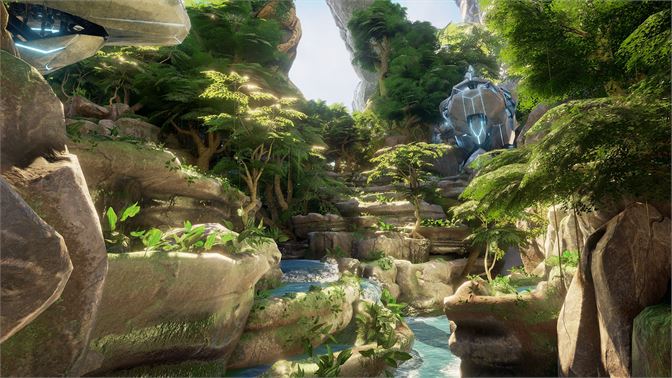

Only Cecil, the inventor, who loved to disappear here, speaks “live” to you through the glass pane of a security door and gives you instructions. The other people who ended up here are almost all gone and can only be seen as projections. Stepping through it just teleports you to another location under that intergalactic cheese dome. For someone who grew up with Outer Limits and Star Trek, this is a simply lovely greeting.Ībove everything is a blue dome that turns the whole thing into a prison. Clearly earthly desert strips run through the alien world, as if the aliens who make the area around Area 51 unsafe had not only kidnapped people, but entire regions at the same time. A beautiful little country house with a white fence, mailbox and front garden is parked nonchalantly in front of shimmering bluish rock formations and a strange firmament. What’s happened? Well, through space and time, different people and their immediate surroundings have been transplanted to a strange planet and no one knows why. Everything here revolves around an exotic, seemingly strange world, the devices and devices of which you have to decipher to find out why you ended up here in the first place. Otherwise, astonishingly – and happily – little has changed. I’m not sure in 1993 if Cyan Worlds ever thought their games would look like this at some point. The technical foundation for this is provided by the Unreal Engine 4, which nowadays allows the talented world designers a lot more visual brilliance than the rigid prerendering process from back then, which we actually considered to be state-of-the-art at the time. If you like, you can also click your way through the landscape in the classic way, like on rails. We’re always talking about the unofficial successor to a game that largely consisted of self-running CG films with a few real actors.įortunately, Obduction relies on environments calculated in real time, through which you can walk or run completely freely, but keeps the actors, who now and then address themselves directly to the player. What is surprising, however, is the fact that Obduction takes its place in today’s gaming landscape without looking like a foreign body. It doesn’t come completely out of nowhere, as each of these games drew one or the other lesson from the work of the Millers. It combines the joy of storytelling and exploring mysterious worlds from games like Ethan Carter and Everybody’s Gone to the Rapture with the love of puzzles from The Witness, Talos Principle and Portal. In any case, in 2016, Obduction feels more topical than ever. Did you already suspect three years ago how closely Obduction would put its finger on the pulse of the times? Obduction, which began its journey in 2013 as a successful Kickstarter, is nothing more than a myst for the new millennium, after the last part of 2005 was still too stuck in the past. There they are again, the Miller brothers Rand and Robyn, reviving the spirit of one of the most famous games of all time. Overall, the Myst principle has aged well.

This ego adventure is not particularly difficult, but beautifully mysterious and audiovisually stimulating.


 0 kommentar(er)
0 kommentar(er)
